Tibetans in Nepal
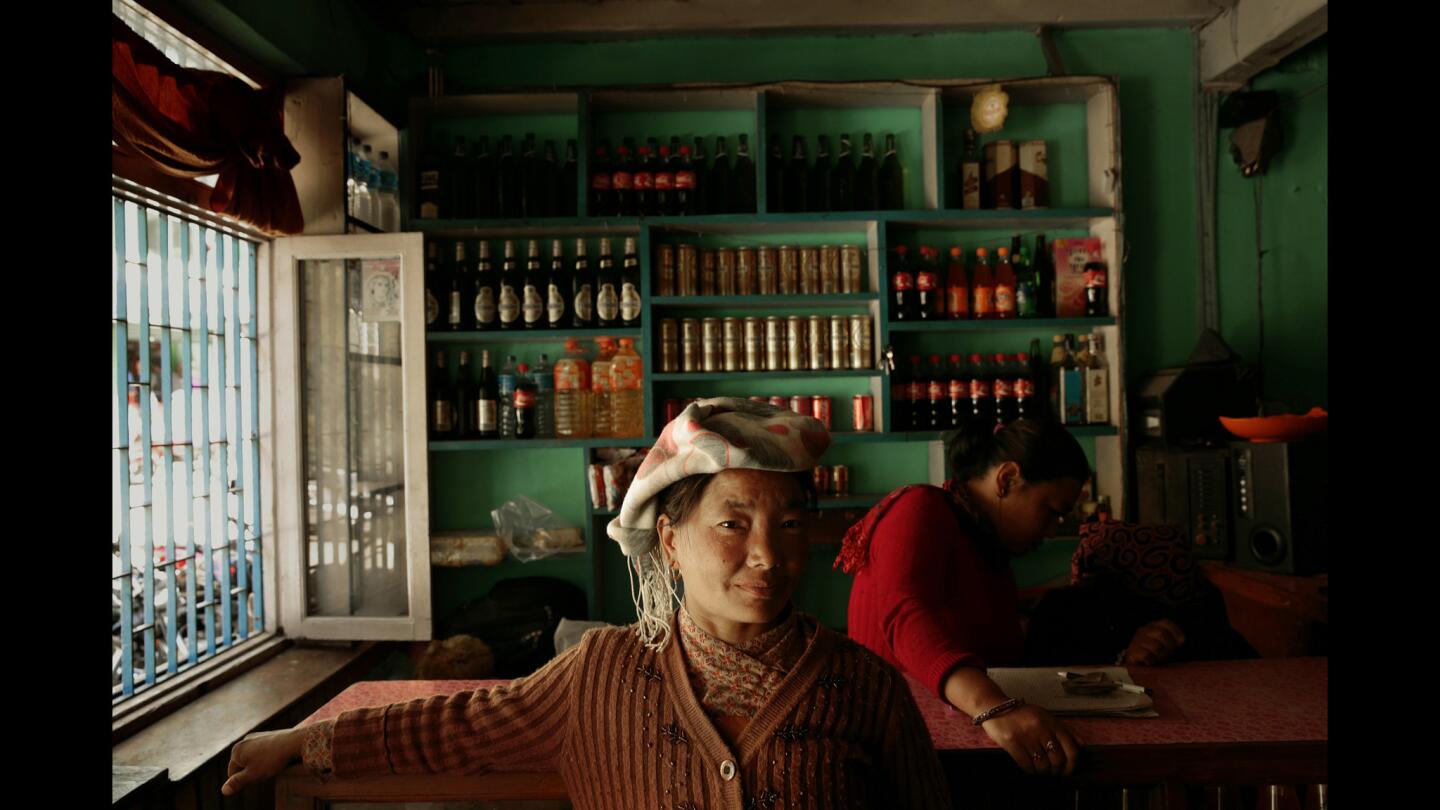
Two women work in a restaurant in Kodari, Nepal, a busy border town with China where many goods are coming into Nepal. China is pumping a lot of money into the economy. Two women work in a restaurant in Kodari.
(Carolyn Cole / Los Angeles Times)For decades, Nepal was the main station on an underground railroad for Tibetans fleeing China, which claims sovereignty over Tibet. Now the doors are slamming shut, as Nepal falls under the sway of China’s power and money.
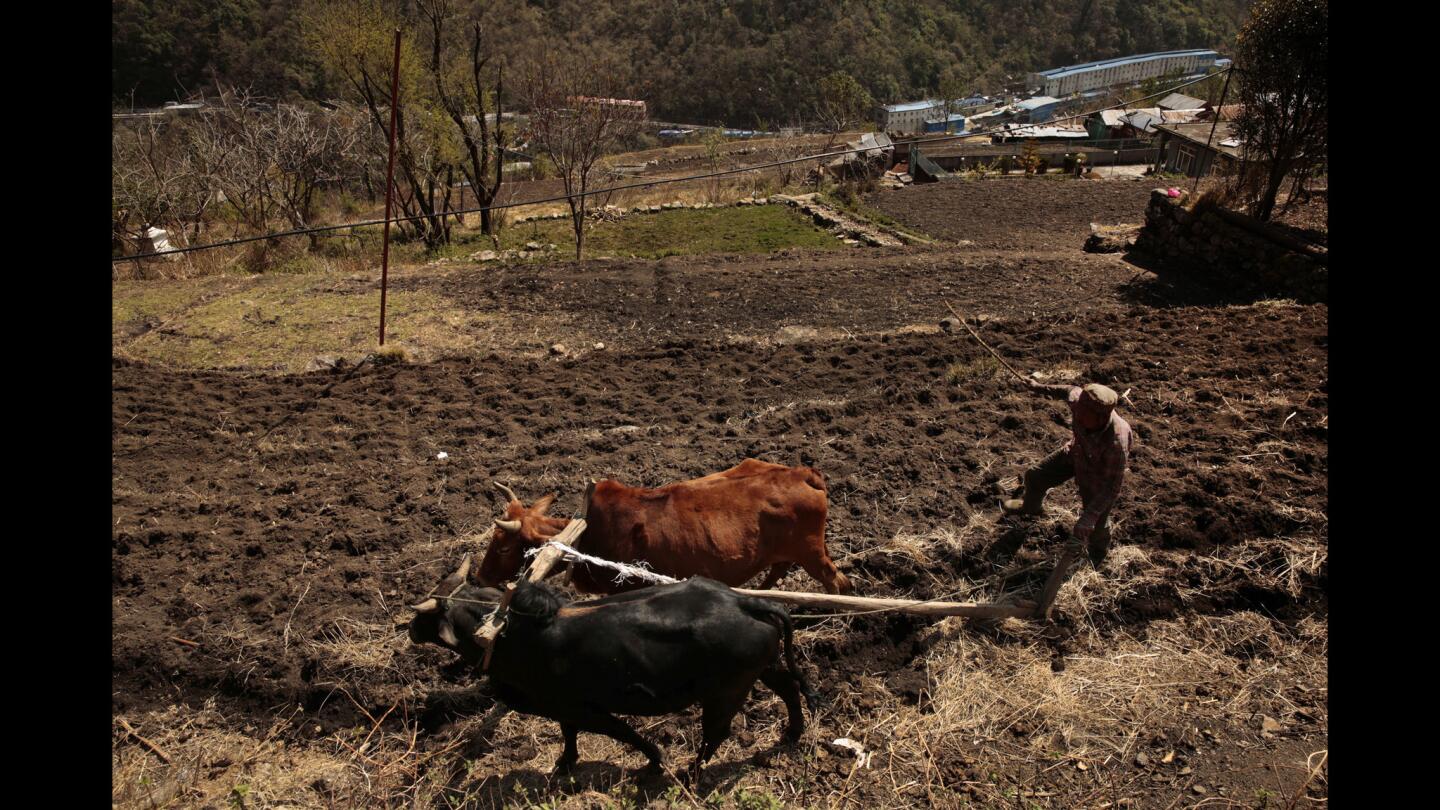
Farmers work the fields high above the Nepalese-Chinese border.
(Carolyn Cole / Los Angeles Times)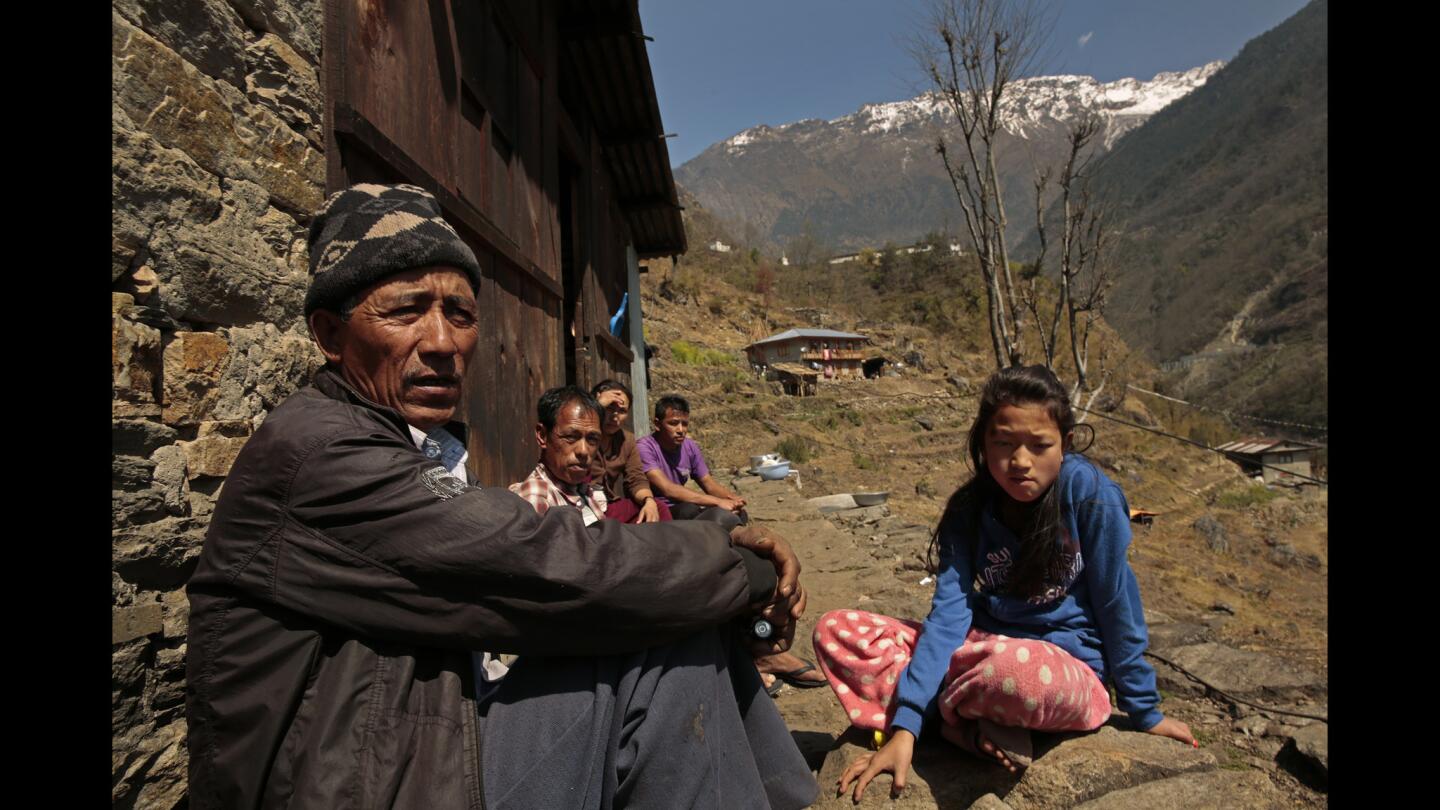
Farmer Pema Tanang, 62, works the fields above Nepal’s border with China. Tibetans “used to come streaming across the border, but now the numbers are practically nil.”
(Carolyn Cole / Los Angeles Times)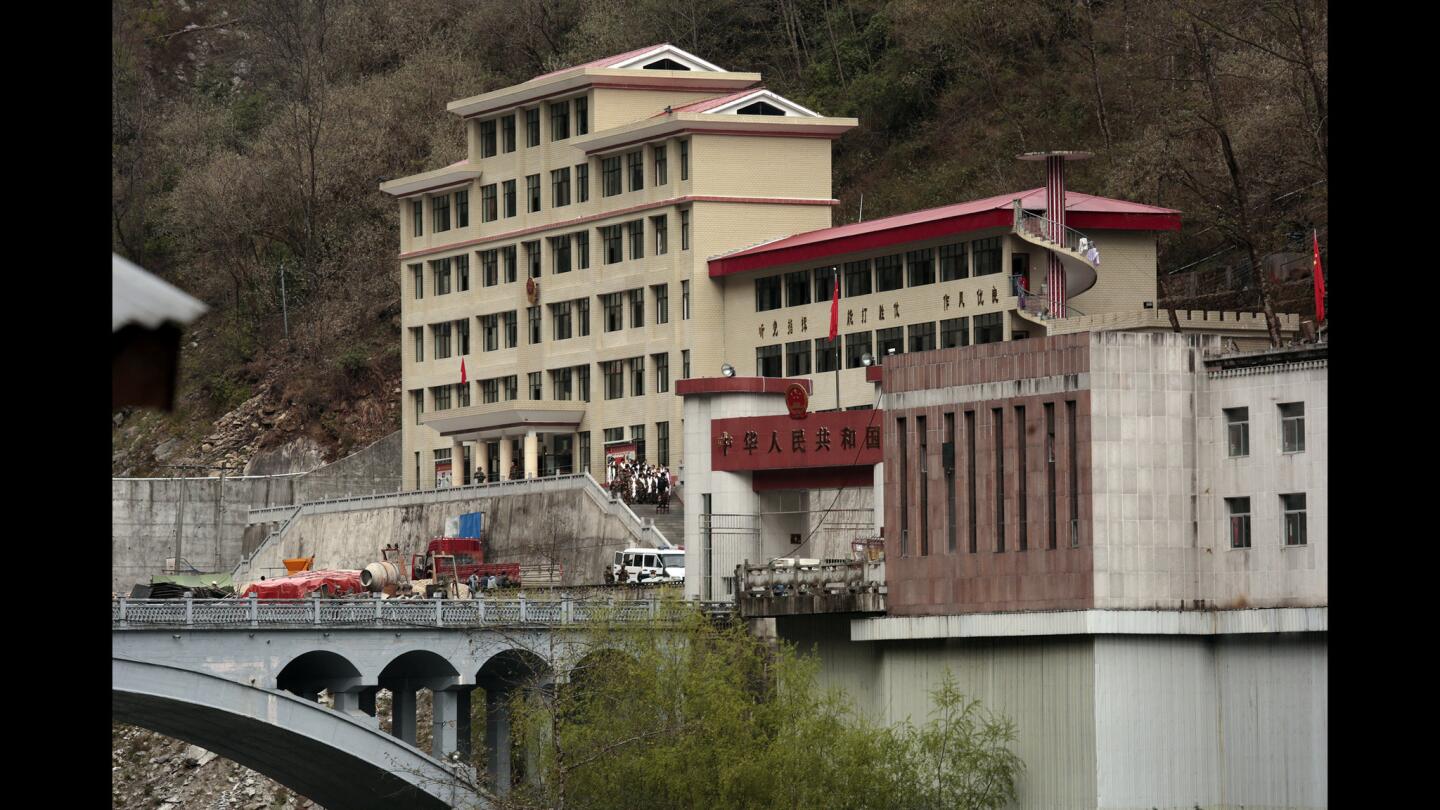
Chinese government buildings can be seen across the Friendship Bridge connecting China and Nepal.
(Carolyn Cole / Los Angeles Times)Advertisement
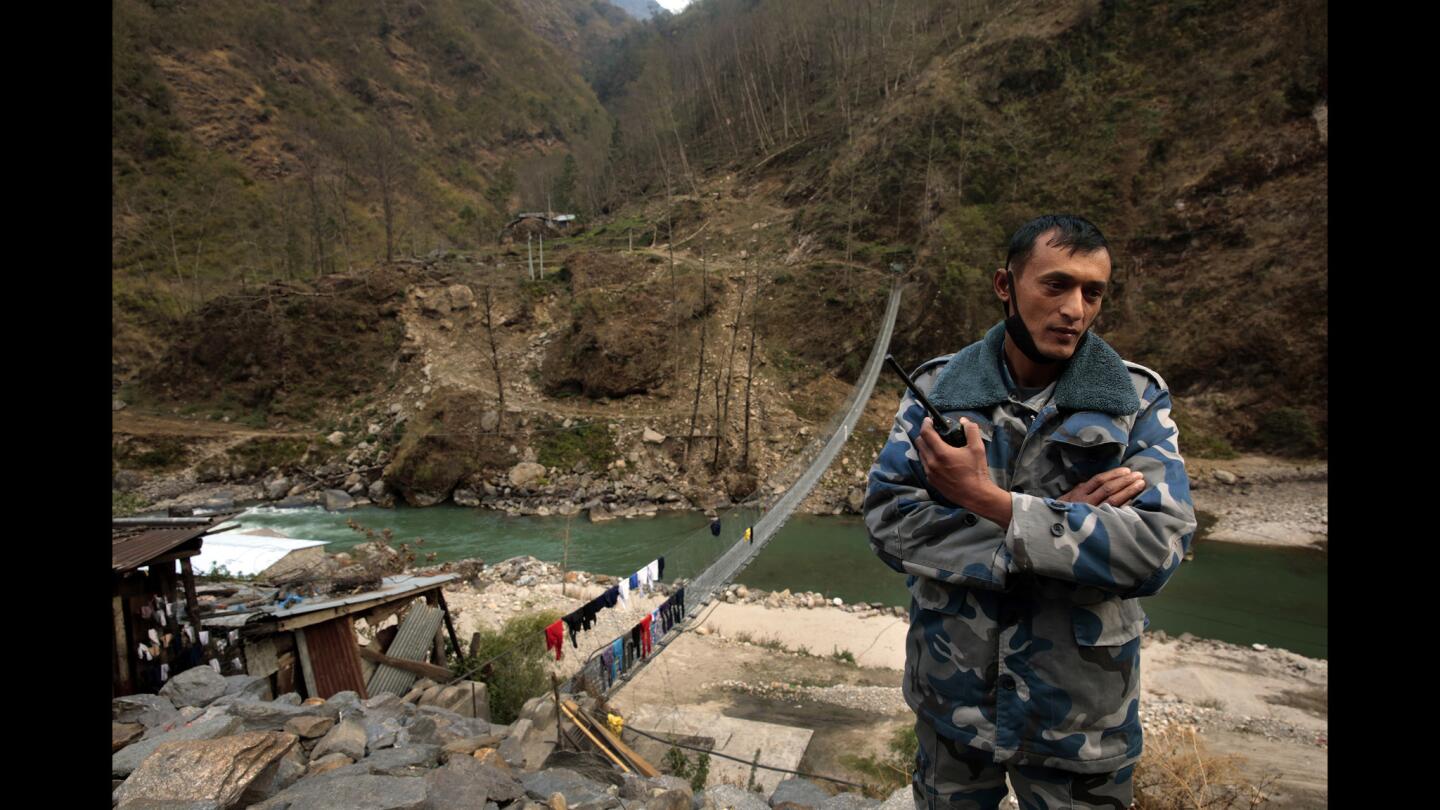
A Nepalese policeman stands guard at a border crossing between China and Tibet.
(Carolyn Cole / Los Angeles Times)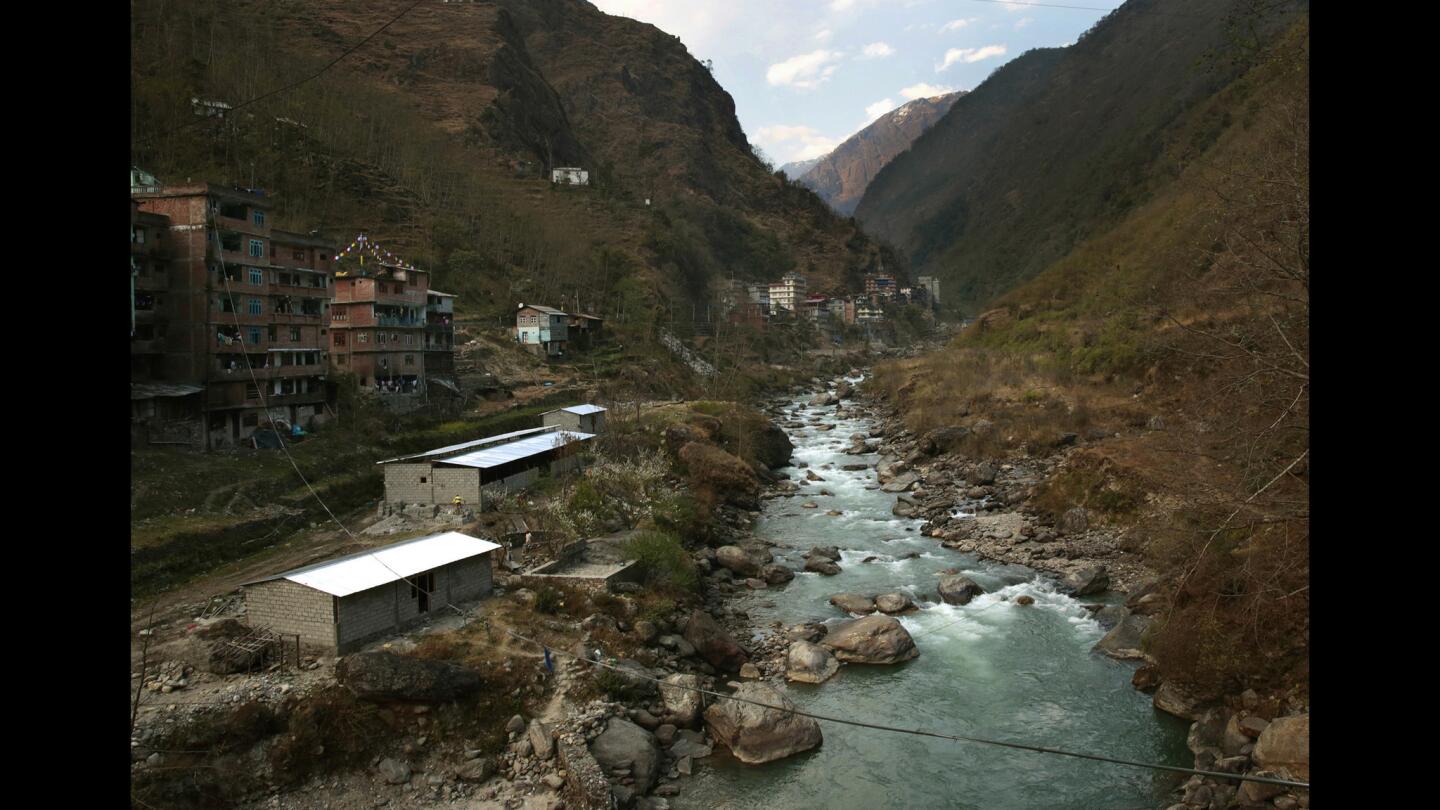
The Sun Kosi River runs along the border between Nepal and China and is a major obstacle for Tibetans trying to leave China.
(Carolyn Cole / Los Angeles Times)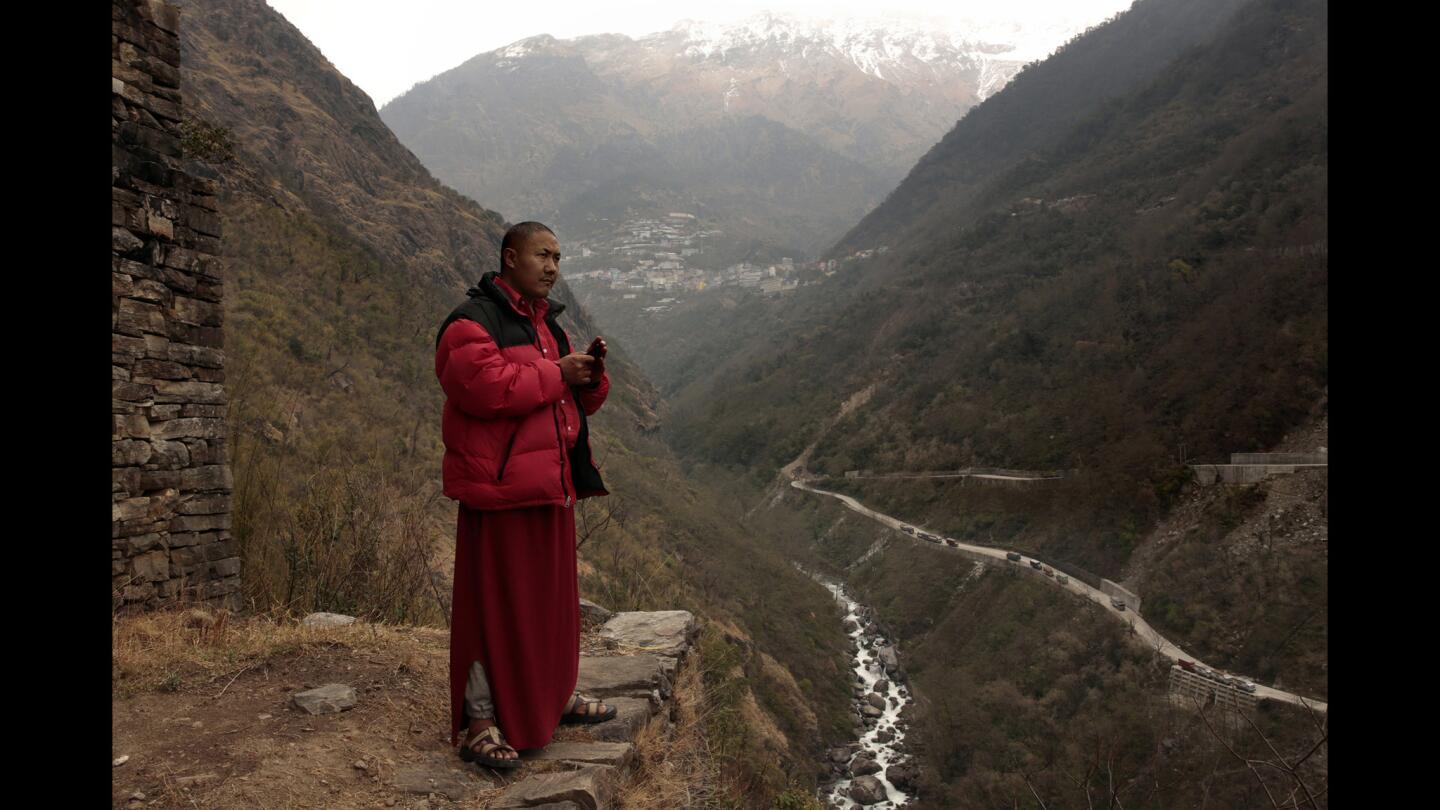
Tibetan monk Jangpo lives at the Liping Monastery, perched high on a bluff over the customs checkpoint between Nepal and China. “When I came out, there were no cameras, checkpoints, no police,” said Jangpo, who crossed from Tibet as a teenager in the mid-90s in order to study Buddhism.
(Carolyn Cole / Los Angeles Times)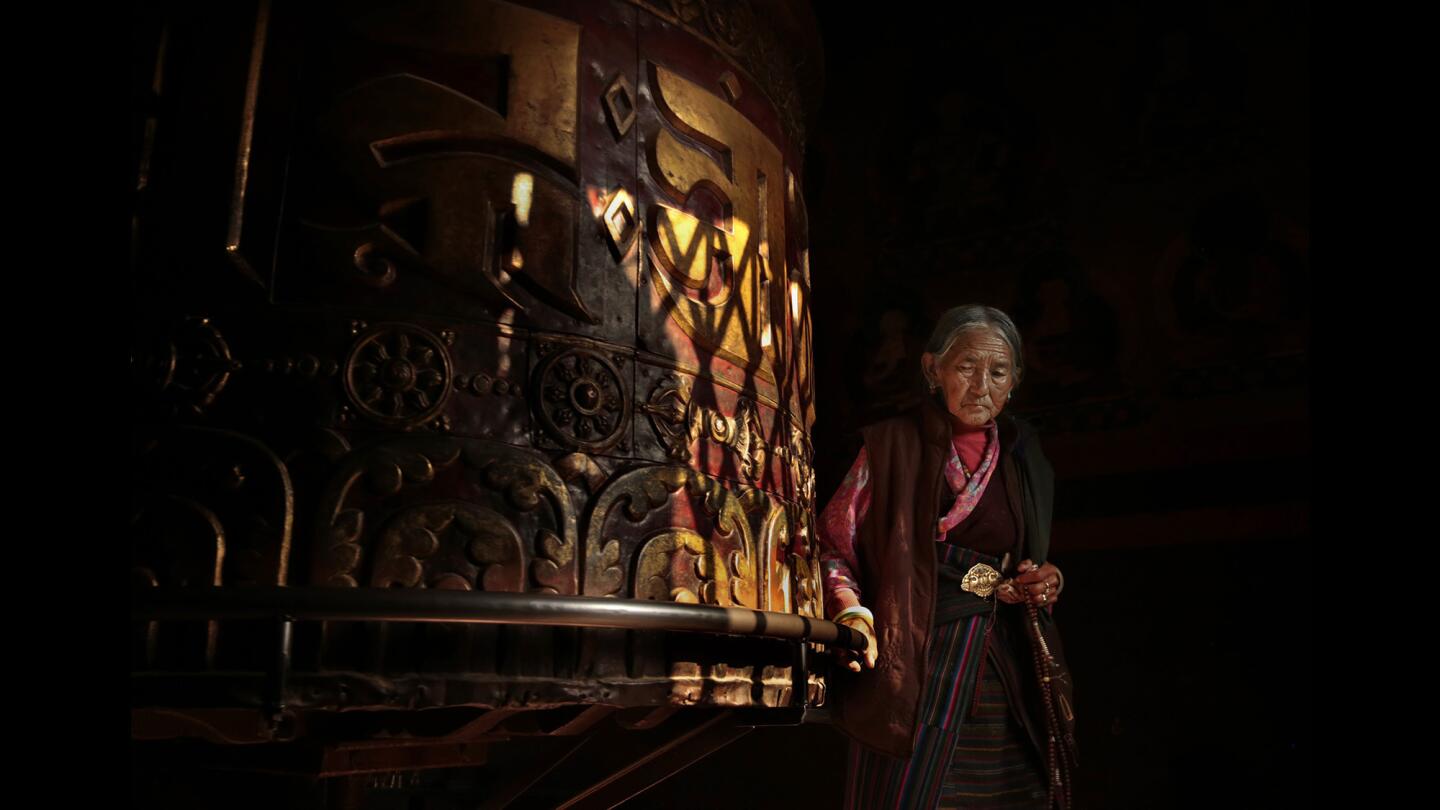
A woman prays at Boudhanath Stupa in Kathmandu, Nepal.
(Carolyn Cole / Los Angeles Times)Advertisement
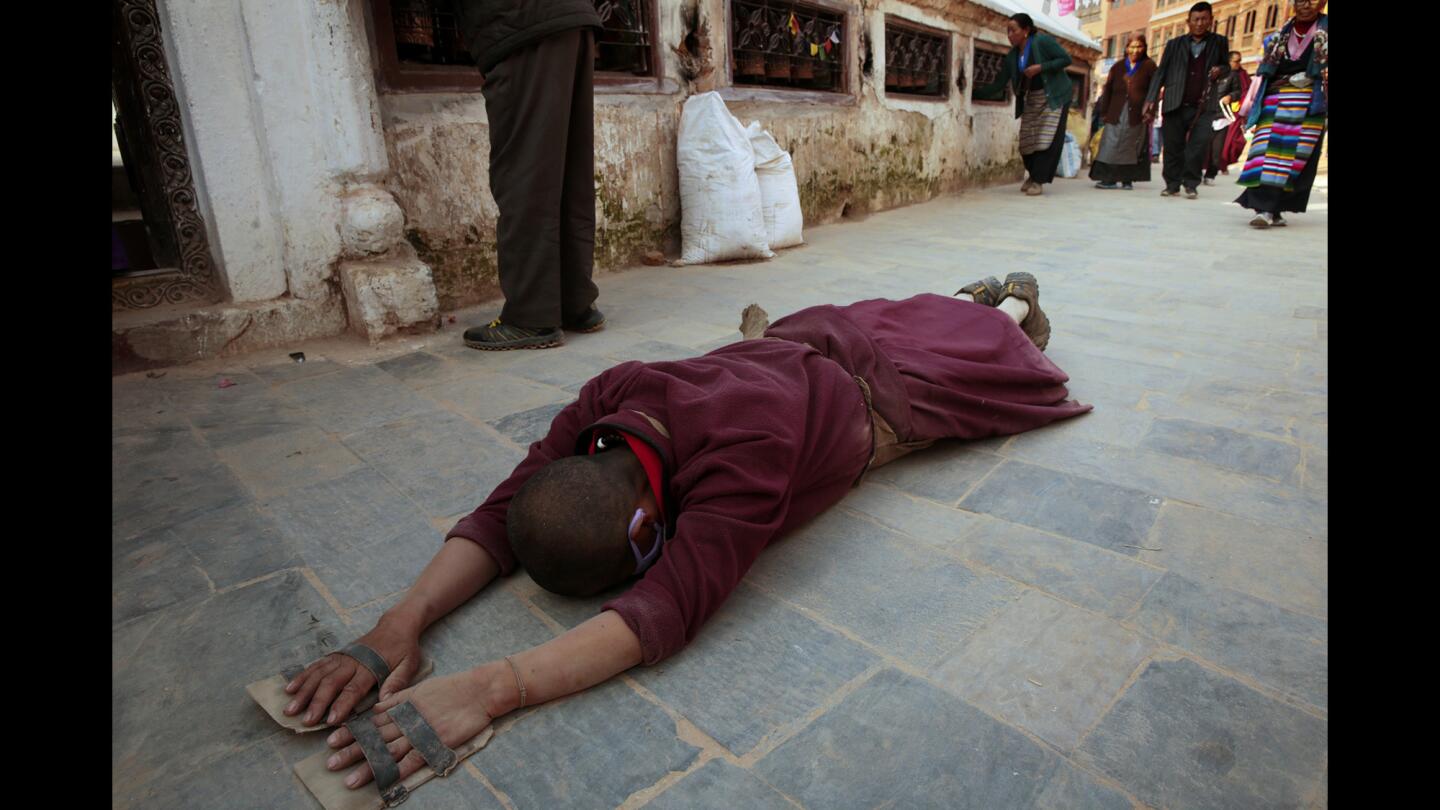
A woman prostrates at the Boudhanath Stupa in Kathmandu.
(Carolyn Cole / Los Angeles Times)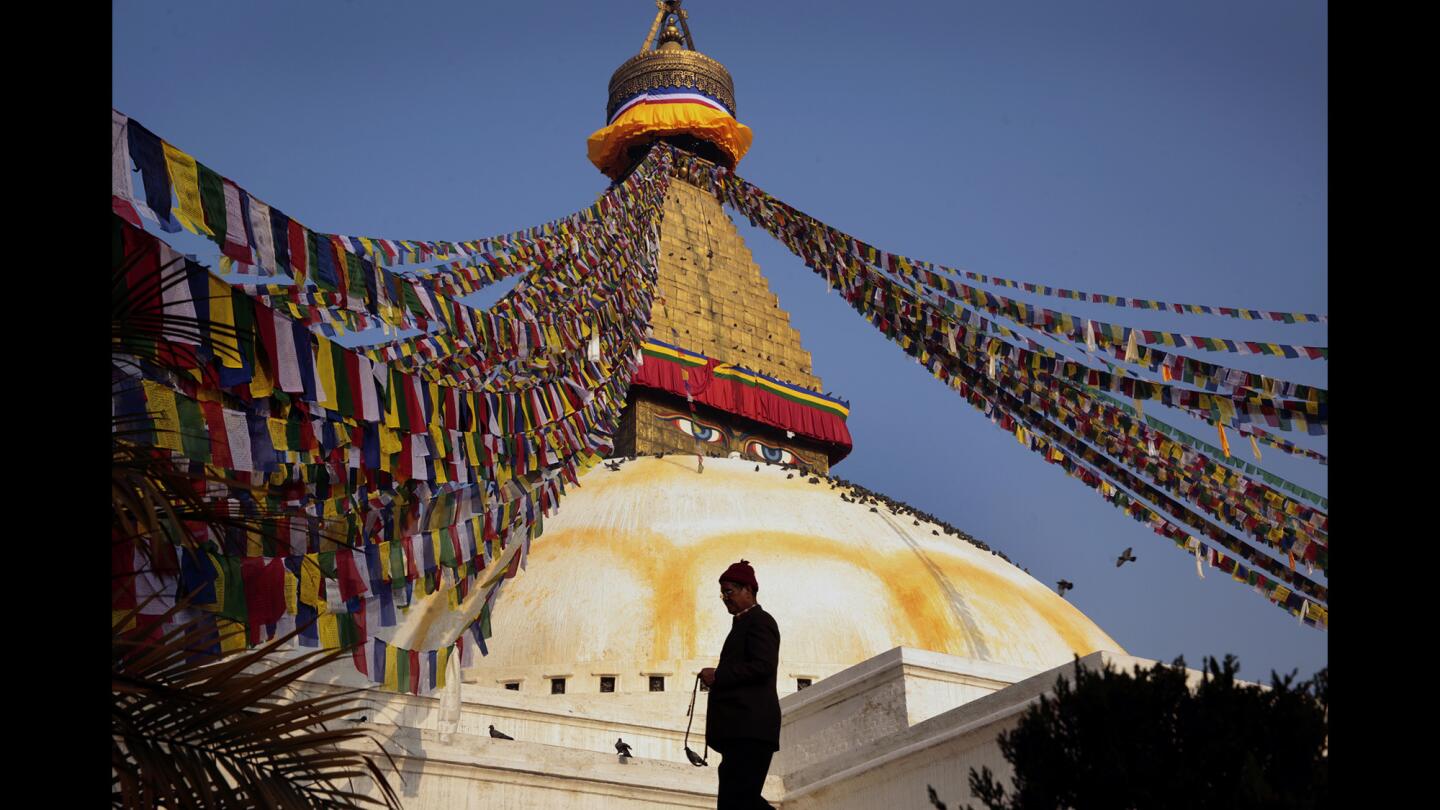
The Boudhanath Stupa in Kathmandu, Nepal, is a place of worship for Buddists. Tibetans used to swarm to Boudhanath during the Tibetan New Year with large photos of the Dalai Lama; such ceremonies are now held out of public view.
(Carolyn Cole / Los Angeles Times)






